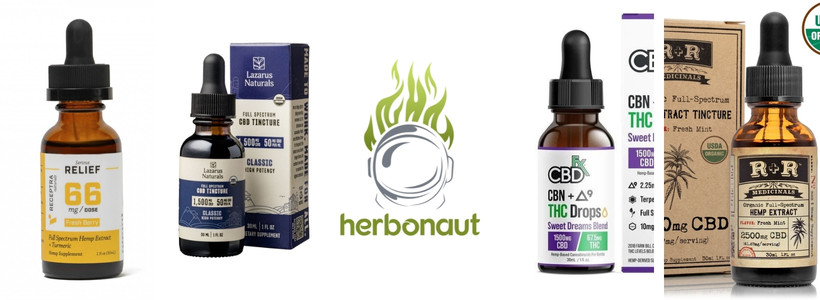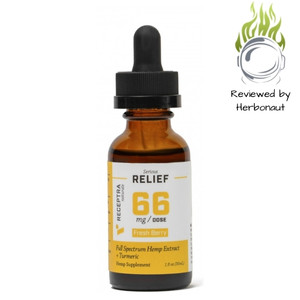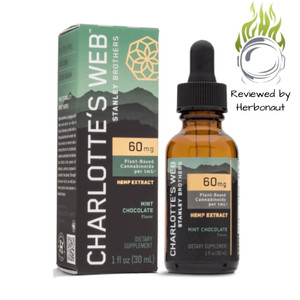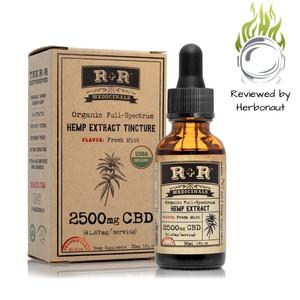
According to various surveys and studies, pain relief is one of the main reasons for CBD oil use.
There isn’t much clinical evidence to support the use of CBD products for pain conditions (yet).
But anecdotal and observational evidence are plenty.
Today you’re getting a list of the best CBD oils for pain relief.
Since 2015, we have tested and reviewed over 100 CBD oils on the following metrics:
- Cannabinoid- and terpene-profiles;
- Transparency of the brand;
- Experienced effects;
- Value;
- Taste.
When it comes to pain-relief, the most effective CBD oils are those with great cannabinoid profiles.
CBD is just one of the many hemp-derived cannabinoids with a potential for pain relief.
THC has more scientific and anecdotal proof for being an effective pain reliever than CBD.
Then there are cannabinoids like CBG, CBC, and CBN, all of which have proven anti-inflammatory and sometimes pain-reducing effects.
The best CBD oil for pain has a good amount of CBD, but also:
- It has high levels of THC (not more than 0.3% to stay federally legal),
- It has high levels of other minor cannabinoids like CBG, CBC, and CBN,
- It has high levels of hemp-derived terpenes with anti-inflammatory and pain-reducing properties (for example, myrcene and b-caryophyllene).
Besides these characteristics a good CBD oil for pain should come from a transparent brand, that:
- Provides full panel lab-test reports on a batch-by-batch basis, and,
- Is open about the sourced hemp.
Let’s get started.
Table of Contents
1. Receptra Naturals Serious Relief + Turmeric Tincture 66mg/dose
 When it comes high-THC CBD oils, this oil makes it to the top of the list.
When it comes high-THC CBD oils, this oil makes it to the top of the list.
It contains 0.28% THC. This is close to the maximum a federally legal CBD oil can have.
One milliliter of this oil contains 2.66mg THC.
Of course, THC isn’t the main cannabinoid inside this oil.
That’s, of course, CBD.
And with a CBD-percentage of 6.62% and 62.9 milligrams of CBD per milliliter, this oil also has a higher-than-average CBD-content.
But it doesn’t stop there…
This oil also has a much higher concentration of minor cannabinoids with pain-reducing and anti-inflammatory properties than the average CBD oil.
For example:
- Its CBC-percentage is 0.37%. You get 3.48 milligrams of CBC per one milliliter.
- Its CBG-percentage is 0.25%. You get 2.39 milligrams of CBG per one milliliter.
- Its CBDV-percentage is 0.08%. You get 0.8 milligrams of CBDV per one milliliter.
- Its CBDA-percentage is 0.02%. You get 0.2 milligrams of CBDA per one milliliter.
Especially CBC and CBC are associated with potent anti-inflammatory and pain reducing effects (1).
On top of that, they potentiate the anti-inflammatory and pain-reducing effects of CBD and THC.
The cannabinoid-profile of this oil for the purpose of pain relief is just among the best.
The only thing that could be better with this oil is its terpene-profile.
It has a decent number of terpenes with anti-inflammatory terpenes, namely:
- Limonene 0.03% or 0.3mg per one milliliter,
- B-caryophyllene 0.07% or 0.7mg per one milliliter,
- Myrcene 0.01% or 0.1mg per one milliliter,
These concentrations aren’t really enough to truly experience the anti-inflammatory or pain-reducing effects of these terpenes. But are potentially high enough to potentiate the effects of the cannabinoids.
Besides hemp-derived compounds, this oil contains turmeric.
Curcumin, the active compound in turmeric is a highly potent anti-inflammatory compound. Various studies show that it can effectively reduce pain and inflammation (2).
By combining cannabinoids like CBD and THC with curcumin in a single product, you get an even more effective product for pain relief.
Receptra Naturals is also as transparent as it gets.
They provide full panel lab-test reports on a batch-by-batch basis.
Price-wise, you get:
- 15.52mg CBD per $1,
- 0.63mg THC per $1, and,
- 1.65mg minor cannabinoids like CBC and CBG per $1.
15% off coupon code:
- HERBONAUT
Go to Receptra Naturals’ Website
Next up…
2. Charlotte’s Web CBD Oil: 60mg CBD/1ml
 This oil also has a higher THC-content than the average CBD oil.
This oil also has a higher THC-content than the average CBD oil.
It has a THC-percentage of 0.23%. Which means you get 2.1mg THC per one milliliter.
With a CBD-percentage of 7.3%, the CBD-content of this oil is also above-average. You get 69mg CBD per one milliliter.
And the minor cannabinoid-content of this oil is also above average.
With regards to anti-inflammatory and pain-reducing minor cannabinoids, CBC, CBG, CBDA, CBDV, and CBN are the most important.
Well, this oil has:
- 0.28% CBC, or 3 milligrams per one milliliter,
- 0.18% CBDA, or 2 milligrams per one milliliter,
- 0.12% CBG, or 1.4 milligrams per one milliliter,
- 0.03% CBN, or 0.3 milligrams per one milliliter.
Compared to Receptra Naturals Serious Relief, this oil has lower levels of CBC and CBG. But it has higher levels of CBDA.
So it’s hard to say which oil has the better profile for minor cannabinoids. But since Receptra Naturals has more THC, we give the slight edge to that oil.
Supposedly, this oil also has terpenes. But there’s no terpene-test to prove anything. Therefore, we take these claims with a grain of salt.
That’s also one of the points Charlotte’s Web could improve:
They provide a close-to full panel lab-test report on a batch-by-batch basis. The cannabinoid-potency test is there. All the contaminant tests like pesticide and heavy metal tests are there.
The only thing that’s missing is the terpene-profile test.
But when it comes to pain relief, the cannabinoids are more important anyway.
And since this oil has a great cannabinoid-profile with high levels of THC, it holds a high position on our list.
Price-wise, you get:
- 16.76mg CBD per $1,
- 0.53mg THC per $1, and,
- 1.91mg minor cannabinoids like CBC and CBG per $1.
15% off coupon code:
- HERBONAUT
Up next…
3. Lazarus Naturals Full Spectrum, High Potency CBD Oil Tincture
 With a THC-percentage of 0.194%, this oil has decent THC-strength.
With a THC-percentage of 0.194%, this oil has decent THC-strength.
You get 1.8 milligrams of THC per one milliliter.
This isn’t as high as the previous options, but it’s still higher than the average. The average THC-percentage of full-spectrum CBD oils hovers between 0.1% and 0.15%.
CBD-wise the potency of this oil is also a bit lower than the previous options:
- 4.3% CBD, or 51.5 milligrams per one milliliter.
This is still higher than the average. The average CBD oil in the United States has a CBD-potency of between 3% and 4%.
When it comes to other minor cannabinoids than THC, this oil two of the four most important anti-inflammatory and pain-reducing cannabinoids:
- 0.22% or 2.1 milligrams per one milliliter CBC,
- 0.12% or 1.1 milligrams per one milliliter CBG,
- 0.02% or 0.2 milligrams per one milliliter CBDV.
It has no CBDA or CBN in detectable levels.
CBN isn’t very common inside most CBD oils, so that’s normal. But we would’ve liked to see at least a small concentration of CBDA. CBDA is a highly potent anti-inflammatory compound that has better oral bioavailability than CBD. So some CBDA inside a CBD product is always good.
This oil has the best terpene-profile on the list.
It has total terpene-content of 0.45%. The main terpenes being:
- Farnesene (0.16%), and,
- b-caryohyllene (0.1%).
Both of these terpenes are associated with anti-inflammatory effects.
But b-caryophyllene definitely has more scientific literature backing it up as a potential agent for pain relief.
Lazarus Naturals is as transparent as it gets when it comes to CBD brands.
All of their products come with full panel lab-test reports on batch-by-batch basis.
But what makes this CBD oil stand out is its price.
This is the most affordable option for pain relief on the list.
You get:
- 38.7mg CBD per $1,
- 1.35mg THC per $1, and,
- 2.4mg minor cannabinoids like CBC and CBG per $1.
Go to Lazarus Naturals’ Website
Next up…
4. CBDfx CBN + Delta-9 THC Drops: Sweet Dreams Blend
 Don’t let the name fool you. This is a CBD-dominant oil.
Don’t let the name fool you. This is a CBD-dominant oil.
But it comes with a good amount of THC and CBN as well.
Its THC-percentage is 0.21%. This is higher than the average. A single milliliter will get you 2.25mg THC.
This oil has a good amount of CBD, 5.2% or around 50mg per one milliliter.
But what makes this oil stand out is its CBN-content.
With a CBN-percentage of 1.6% or 15 milligrams per one milliliter, this oil has much more CBN than the average CBD oil.
When THC oxidizes, one of the by-products is CBN.
CBN interacts with some of the same receptors as THC.
For example:
CBN activates both the cannabinoid receptors 1 and 2 (CB1 and CB2). THC is a potent activator of the CB1 receptor. It’s thought that THC’s pain-reducing effects partially come from this activation. Well, although weaker, CBN is an activator of the CB1 receptor as well.
CBN is also an activator of the CB2 receptor, which is associated with anti-inflammatory effects.
And since CBN is completely legal, it’s possible to bump up the CBN-content inside a CBD oil, without any legal issues.
The downside of this oil is that it has no other minor cannabinoids in meaningful concentrations.
No CBG, CBC, CBDV, or CBDA.
Supposedly, it does have a terpene complex inside. But there’s no terpene test to prove this. The oil tastes like it has terpenes. But since we don’t know what terpenes are inside in what concentrations. Therefore, I can’t rate its terpene-profile for pain relief purposes.
When it comes to transparency, CBDfx is almost as good as it gets.
All their products are backed by full panel lab-test reports on a batch-by-batch basis. All their products are clean and contain the concentrations of cannabinoids as advertised. As said, the only thing that’s missing is a terpene test.
You get:
- 17,64mg CBD per $1,
- 0.8mg THC per $1, and,
- 5.3mg minor cannabinoids per $1 (which consists of only CBN).
Up next…
5. R+R Medicinals 2500mg Full Spectrum Tincture
 CBD-wise, this is the strongest oil on the list.
CBD-wise, this is the strongest oil on the list.
It has a CBD-percentage of 9.6% or 93 milligrams per one milliliter.
But with a THC-percentage of 0.27%, its THC-percentage is also much higher than the average. You get 2.6 milligrams of THC per one milliliter.
Some of the minor cannabinoids with potent anti-inflammatory and pain-reducing effects are also present in high concentrations:
- CBG, 0.35%or 3.3mg per 1ml,
- CBC, 0.33% or 3.2mg per 1ml,
- CBN, 0.06% or 0.5mg per 1ml,
- CBDV, 0.05% or 0.4mg per 1ml.
As you can see, this is a true full-spectrum CBD oil.
Especially CBG and CBC are present in higher-than-average concentrations. And these are exactly the cannabinoids that have the most potential to potentiate the anti-inflammatory and pain-reducing effects of CBD and THC.
Now:
The CBD:THC ratio of this oil is high.
As explained, THC has more scientific and anecdotal proof backing it as a natural aid to relieve pain.
A large part of this effect is attributed to THC’s activation the cannabinoid 1 (CB1) receptor.
CBD is ‘negative allosteric modulator’ of the main receptor that THC activates, namely the CB1 receptor.
This means CBD reduces the activity of other compounds that target the CB1 receptor. So CBD can reduce the potency of THC.
It’s unclear exactly in what ratios CBD has a strong potency-reducing effect on THC. But the higher the CBD:THC ratio, the higher the likelihood of CBD reducing THC’s potency.
And since this oil has a very high CBD:THC ratio, it could be that you experience better effects for pain relief with a CBD oil that:
- Has lower concentrations of CBD and THC, but,
- Has a lower CBD:THC ratio.
But the other side of the coin is that because of this oil’s high CBD concentration, it’s more likely that you’ll experience CBD-specific anti-inflammatory effects.
While CBD doesn’t have a lot of proof for being an effective agent to reduce acute pain…
It does have a lot of proof of being a potent anti-inflammatory agent. So if your pain is inflammation-related, this oil could be the most potent on the list.
R+R Medicinals is among the most transparent CBD brands. All of their products come with full panel lab-test reports on a batch-by-batch basis.
It’s also among the most affordable CBD oils.
You get:
- 38.7mg CBD per $1,
- 1.35mg THC per $1, and,
- 2.4mg minor cannabinoids like CBC and CBG per $1.
Frequently Asked Questions About CBD Oil for Pain
Is CBD Oil an Effective Painkiller?
It depends.
There’s limited evidence that CBD can reduce some types of pain, with inflammatory pain having the most evidence (3).
There’s no evidence that CBD oil works for acute pain, for example.
As explained, THC has more evidence for being an effective pain reliever (4).
Other cannabinoids like CBG, CBC, and CBN also have proven anti-inflammatory effects (5).
So a CBD oil with high levels of THC and these other minor cannabinoids, has a much better chance of relieving your pain than an oil that only has CBD.
Also because cannabinoids potentiate each other’s effects.
If you’re looking for federally legal products with higher concentrations of THC per dose, check out:
These products have much higher levels of THC per serving than these oils and may prove to be more effective for relieving pain.
Does CBD Reduce Inflammation or Pain?
Well, both are connected.
Inflammation usually produces a pain-response.
So if your pain condition is inflammation-related, CBD may reduce both your inflammation and pain.
It IS important to use and dose CBD oil the right way for it to be effective.
Read up on how to use CBD oil for pain, before you start using it.
Do CBD Oils for Pain Get You High?
None of these CBD oils will give you a full-fledged high in regular doses.
But since these oils have some THC, you may experience some psychoactive effects from the THC you’re ingesting.
Some highly sensitive people can really get high if they take enough milliliters of this oil.
Do CBD Oils for Pain Have Side Effects?
In doses under 100 milligrams, CBD rarely has very noticeable side effects.
If you go above 100 milligrams your chance of experiencing side effects increases. The main side effects associated with CBD-use are:
- Diarrhea,
- Pyrexia,
- Decreased appetite, and,
- Sleepiness/drowsiness.
Also realize that if you take 100 milligrams CBD, with some of these CBD oils, you will be consuming more than 5 milligrams THC.
5 milligrams THC is enough to get you high. It’s also enough to experience THC-related side effects like anxiety or paranoia.
So always be aware of how much THC you’re ingesting with your dose.
What’s Next…
Go to our CBD Hub to learn more about cannabinoid-related topics.
Scientific References:
- Zagožen, M., ČErenak, A., & Kreft, S. (2020). Cannabigerol and cannabichromene in Cannabis sativa L. Acta Pharmaceutica, 71(3), 355–364. https://doi.org/10.2478/acph-2021-0021
- Eke-Okoro, U. J., Raffa, R. B., Pergolizzi, J. V., Breve, F., & Taylor, R. (2018). Curcumin in turmeric: Basic and clinical evidence for a potential role in analgesia. Journal of Clinical Pharmacy and Therapeutics, 43(4), 460–466. https://doi.org/10.1111/jcpt.12703
- Mlost, J., Bryk, M., & Starowicz, K. (2020). Cannabidiol for Pain Treatment: Focus on Pharmacology and Mechanism of Action. International Journal of Molecular Sciences, 21(22), 8870. https://doi.org/10.3390/ijms21228870
- Linher-Melville, K., Zhu, Y. F., Sidhu, J., Parzei, N., Shahid, A., Seesankar, G., Ma, D., Wang, Z., Zacal, N., Sharma, M., Parihar, V., Zacharias, R., & Singh, G. (2020). Evaluation of the preclinical analgesic efficacy of naturally derived, orally administered oil forms of Δ9-tetrahydrocannabinol (THC), cannabidiol (CBD), and their 1:1 combination. PLOS ONE, 15(6), e0234176. https://doi.org/10.1371/journal.pone.0234176
- Baron, E. P. (2018). Medicinal Properties of Cannabinoids, Terpenes, and Flavonoids in Cannabis, and Benefits in Migraine, Headache, and Pain: An Update on Current Evidence and Cannabis Science. Headache: The Journal of Head and Face Pain, 58(7), 1139–1186. https://doi.org/10.1111/head.13345